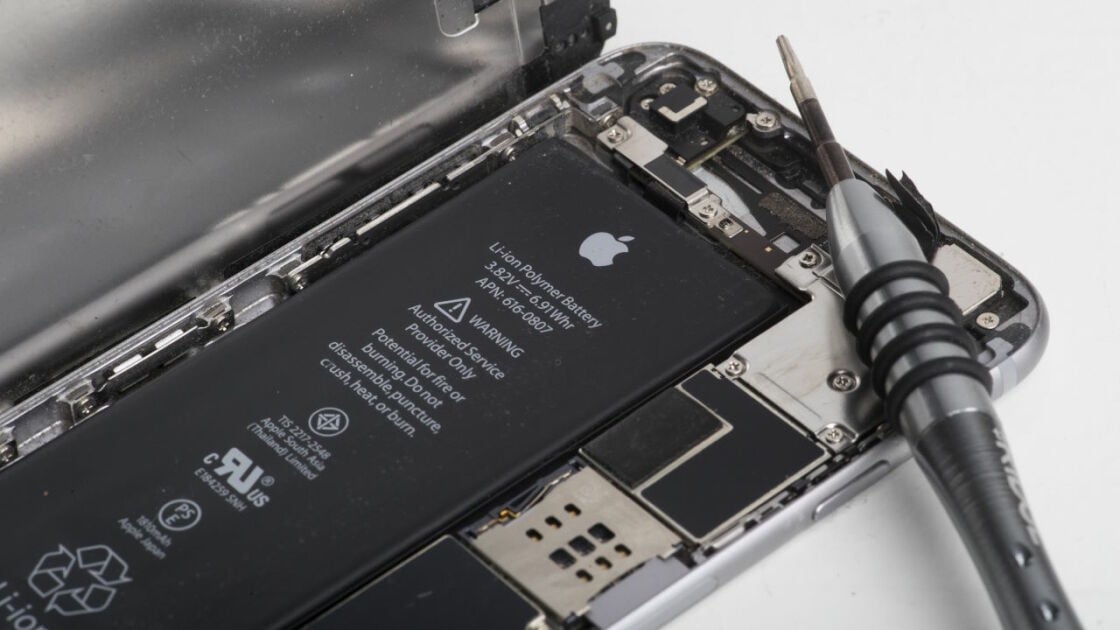My Fairphone 3 already has replaceable batteries. What is really missing is an industry-standard form factor, like ATX/ITX exists for desktops.
If there were a standard, we’d be able to upgrade the components as needed. We wouldn’t be forced to waste perfectly good displays just because we would like to upgrade the CPU. Companies wouldn’t be pushing for new upgrades every year. Apple/Samsung wouldn’t be able to hold their dominance because it would be easier for smaller players to specialize in specific components. The entire maker community wouldn’t have to be fighting over Raspberry PI and we could even have a cottage industry around upcycled consumer electronics.
That would be quite utopian, however I feel such a thing would be incredible hard to achieve. Different form factors require different layouts, space is much tighter and should not be wasted. In desktop PC land, you have plenty of room to fit things as you want.
It may not be showstopper, but it’s certainly a challenge. And of course, companies won’t like it :PI feel like the opposite: the constraints are so well-known and so well defined that most phones end up looking the same anyway, we might as well just take one of them (any of them!) and make it a standard.
companies won’t like it
Apple/Samsung surely won’t. But I’d bet that the smaller ones would like to have some type of level-playing field. Also, imagine the amount of startups that could come up in the space.
It’s the first time I hear about Fairphone. How they embrace repairability is amazing. I hope they’ll expand to North America at one point.
I’ve had this thought in the past, but upon further research, on a smartphone scale it runs into a few issues.
A PC has relatively divorced components because it has the space to accommodate slots, but that already goes out the window for laptops; the best you get is RAM and maybe MXM. People generally want slimmer and more battery-dense products, so motherboards with everything soldered can manage to be absolutely tiny (see: newer macbooks) compared to ones where everything is slotted. Newer smartphones don’t just last longer on battery because they’re bigger; much of the internal volume of a smartphone is now to hold the battery as everything around it shrinks. Modular connectors cost volume and money, for a use case where both are at a premium; most people would generally rather buy a non-modular phone that gets better battery life and offers better water resistance.
As evidenced by the Note 7, batteries also need a decent bit of structural integrity around them to be safe, and the best way to accomplish that is just a 2-part box that’s been glued together. This has the side effect of making water resistance easier and slimming the phone down. Any swappable battery inherently has worse water resistance and volumetric efficiency than a pouch csll in a glued box, and manufacturers value both good battery life and things not blowing up.
Smartphone CPUs (or rather SoCs) contain not only the CPU bit, but important parts of the radio, camera processing, location processing, and GPU. Therefore Android ones come with driver packs from manufacturers that make it all work, but if you’re swapping components around you need to make sure your sensors like cameras have a way to install drivers (and a general compatibility standard); which means at best you’re swapping pretty big chunks of a smartphone at a time.
Even without forced obsolescence, smartphones have a relatively fixed lifespan of ~5-8 years due to software upgrades, how carriers buy up new radio frequencies, physical damage, battery degradation, vibration motor wear, camera focusing mechanism wear (from vibrations) and in the case of AMOLED display wear. This isn’t a knock on standardization, but you can already achieve this lifespan out of a smartphone if you use something like Advanced Charging Controller to limit battery charge to 80%.
If you look at Project Ara (which is the most extreme case of modularity), it failed because of all of the above. The battery life, structural integrity, cost efficiency, compatibility, and waterproofness would all be awful compared to a standard phone.
People generally want slimmer and more battery-dense products
I call BS on that one. People say they want slim electronics and the first thing they do is to slap it in a protective case. It’s like SUVs and light trucks in the USA. People don’t even have the choice anymore because smaller cars are not as profitable, so then Ford goes to sell one gazillion F150s to soccer moms and then they claim “we are just fulfilling the demand of the market”.
My Fairphone seems bulky in comparison (and it is), but it is small enough that I can have it in my pocket.
(laptops) the best you get is RAM and maybe MXM
Is it really? With things like M2 slots you can get separate wifi adapters, fast storage. With Thunderbolt, we don’t even need a high-end graphics card in the laptop. We can do plenty with an iGPU and have an external, upgradeable GPU for those that want to game or do heavy work.
which means at best you’re swapping pretty big chunks of a smartphone at a time.
Fine by me. If we break down as CPU/storage/camera module/“everything else board”, then it’s 4 modules. Which is a lot more than what we are getting now and it’s the complete opposite of what manufacturers are giving us.
deleted by creator
Going from Google-Android to LineageOS boosted the battery life of my old Smartphone by a factor 3 roughly. There where some Google-things consuming battery in the background, probably spying on me. Also using simple Apps from F-Droid helps to get a smooth experience.
In general, that’s definitely a problem too. Just look at Windows 11. Now M$ wants you to buy a new laptop such that their OS can run at all. I use a >10y old laptop with Linux. No performance issues for everyday use.
Well… for iPhones (and other smartphones) I’m not sure if anything changes. There is a exception in the regulation: if the device is waterproof, it is enough if the manufacturer or repair shops can change the battery for you. They do not need to be user replaceable.
But probably for MacBooks, there will be replaceable batteries in the future. I don’t see, how Apple will find a way around this regulation.
Apple Watch: they are waterproof —> nothing changes.
AirPods: well… are they waterproof? I don’t see user changeable batteries ever. Perhaps they will become waterproof in the future too? :) AirPods, now also for swimming and diving!
iPads: well: probably there will be changeable batteries in the future. Or we will have underwater Tablets soon. We just need another input method. Probably gestures like the VisionPro?
How is “water proof” defined in the legislation? Apple carefully says their devices are water resistant. There is a possibility that it will not qualify.
So there’s going to be a catch here and I’m curious how it will work out. Integrating the battery directly into the phone without it being easily removable is going to mean less capacity since the battery will need a heavier-duty shell since you can’t rely on the phone itself for protection. I get the e-waste angle but generally I wouldn’t keep a phone past the end of updates anyways, and usually battery life is still acceptable at 4 years with good practices (not charging to 100% and holding it there overnight, etc).
My last two phones both got slow as their batteries got bad, and were basically like new after replacing them. My current phone doesn’t allow swapping the batteries.
For someone thrifty, being able to replace the battery can extend a phone’s life 2x or more. Even if you don’t want to keep using it, you could still resell it or give it to someone who doesn’t need the newest phones. Non-swappable batteries are a form of planned obsolescence, in addition to just being more compact and probably a little cheaper.







